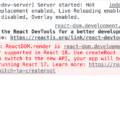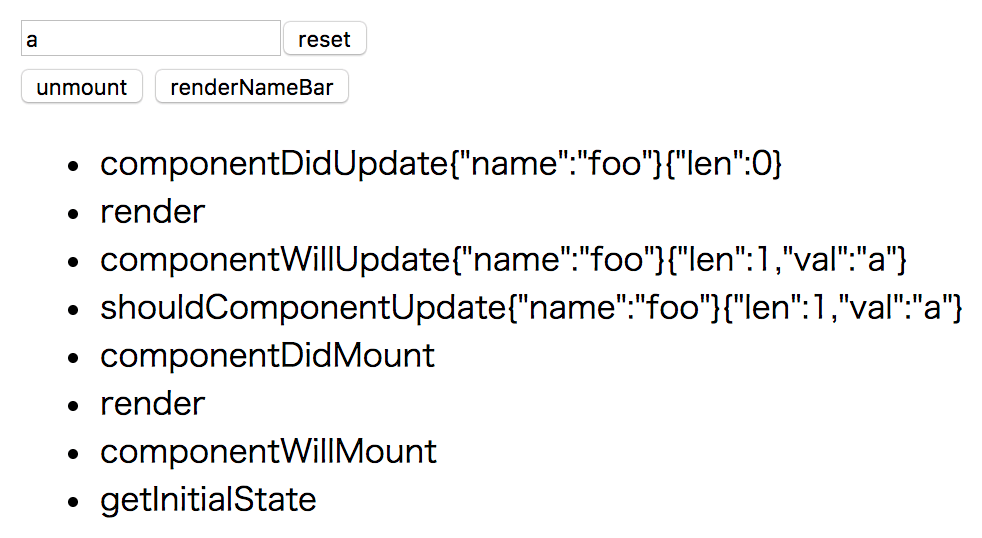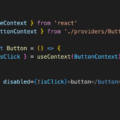
react-serverとは
react-serverとはReact Server Componentsを扱うフレームワークです。
これを使えばReactでもNext.jsと同じように静的ページの生成などができます。
例えばReactでWebページを作成した場合は、body内のHTMLコードは以下のようになっており、h1タグなどはブラウザの「ソースを表示」では確認できません。
<div id="root"></div>しかし、react-serverを使用した場合は静的ページを生成できるので、以下のようにh1タグなどのHTMLが生成された状態になります。
<div id="root">
<div class="App">
<div>
<a href="https://vitejs.dev" target="_blank">
<img src="/vite.svg" class="logo" alt="Vite logo">
</a>
<a href="https://reactjs.org" target="_blank">
<img src="/src/assets/react.svg" class="logo react" alt="React logo">
</a>
</div>
<h1>Vite + React</h1>
<div class="card">
<button>
count is
<!-- -->0</button>
<p>
Edit
<code>src/App.tsx</code>
and save to test HMR
</p>
</div>
<p class="read-the-docs">Click on the Vite and React logos to learn more</p>
</div>
</div>静的ページのWebサイトのほうが表示速度が速く、SEOにも有利です。
そのため、ReactでWebサイトを制作する場合はreact-serverを使用したほうが良いです。
react-serverの使い方
最初に以下のコマンドでReact環境を構築します。
react-swc-tsだとreact-serverは動作しないので注意が必要です。
npm create vite@latest my-react-server -- --template react-ts次に以下のコマンドでインストールと起動を実行します。
cd my-react-server
npm install
npm run dev起動後にソースを表示すると、<div id="root"></div>のようになっており、ソースコード内にh1タグが含まれていないことが確認できます。
<div id="root"></div>起動を一旦停止して、次に以下のコマンドでreactとreact-domをアンインストールして、react-serverをインストールします。
npm uninstall react react-dom
npm install @lazarv/react-serverpackage.json の scripts を react-server を使用するように変更します。
{
"name": "my-react-server",
"private": true,
"version": "0.0.0",
"type": "module",
"scripts": {
"dev": "react-server ./src/main.tsx",
"build": "react-server build ./src/main.tsx",
"lint": "eslint .",
"preview": "react-server start"
},
// 中略
}TypeScriptを利用しているので、tsconfig.node.jsonのcompilerOptionsに"types": ["react/experimental", "react-dom/experimental"], を追記します。
{
"compilerOptions": {
"types": ["react/experimental", "react-dom/experimental"],
// 中略
},
"include": ["vite.config.ts"]
}main.tsxでAppを読み込んで以下のようにします。
カウンター以外の部分が静的になる影響でApp.cssがApp.tsxで読み込めなくなっているので、main.tsxで読みます。
import App from "./App";
import "./index.css";
import './App.css';
export default function Main() {
return (
<html lang="ja">
<head>
<meta charSet="UTF-8" />
<link rel="icon" type="image/svg+xml" href="/vite.svg" />
<meta name="viewport" content="width=device-width, initial-scale=1.0" />
<title>Vite + React + TS</title>
</head>
<body>
<div id="root">
<App />
</div>
</body>
</html>
);
}react-serverではindex.htmlは使用しないので削除してください。
App.tsxにはuseStateが使用されているので、Next.jsと同様に"use client"; を追記してください。
App.cssがApp.tsxで読み込めなくなっているので、App.cssのimportは削除しています。
"use client";
import { useState } from 'react'
import reactLogo from './assets/react.svg'
import viteLogo from '/vite.svg'
// 以下略これらの設定が完了したら、npm run devを実行してみてください。
http://localhost:3000 でreact-serverが起動します。
portを3000ではなく6789にして、実行時にブラウザで開きたい場合は、package.jsonのscriptsのdevを以下のように設定してください。
"dev": "react-server ./src/main.tsx --port 6789 --open",Routerでルーティングを設定する方法
react-serverはRouterコンポーネントを読み込んだルーティングもできます。
やり方はRouteをインポートして、各ページのコンポーネント(例: Home, About) を読み込んで、Routeにpathとelementを指定します。
Routeにexactが付いていないと、/about/foo のような階層のURLでも/aboutと同様に表示されるので、exactを必ず付けてください。
また、各ページのRouteをRouteで囲んで、path="/" render={Layout} を指定すれば、レイアウトを適用できます。
import { PropsWithChildren } from 'react';
import { Route } from '@lazarv/react-server/router';
import Home from './Home';
import About from './About';
function Layout({ children }: PropsWithChildren) {
return (
<div>
<h1>Layout</h1>
{children}
</div>
);
}
export default function App() {
return (
<Route path="/" render={Layout}>
<Route path="/" exact element={<Home />} />
<Route path="/about" exact element={<About />} />
</Route>
);
}function Home() {
return (
<h2>Home Page</h2>
)
}
export default Homefunction About() {
return (
<h2>About Page</h2>
)
}
export default About
http://localhost:3000/

http://localhost:3000/about
Next.jsのように /about/page.tsx のようなファイル配置によるルーティングも設定次第で可能ですが、それをやるなら最初からNext.jsなら面倒な追加設定をしなくても実装できるので、Next.jsを使用したほうが良いです。




